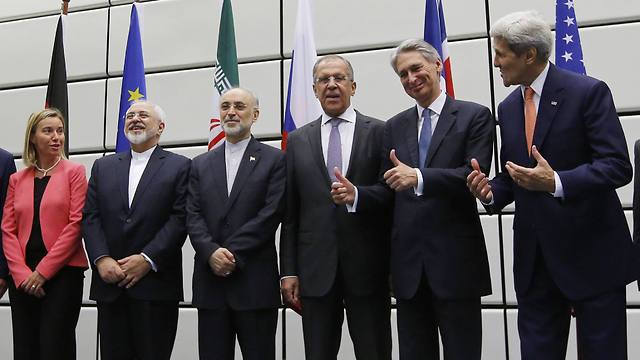Iran’s stockpile of of low-enriched uranium has spiked in the last three months; Diplomat: increase is a normal fluctuation.
Iran has increased its stockpile of low-enriched uranium in the last three months, despite the nuclear agreement stipulating that Tehran must reduce its quantities to a level sufficient for research but not for creating a nuclear weapon.
The assessment was in a report presented Wednesday by the UN’s International Atomic Energy Agency (IAEA) to members of the UN Security Council and a restricted number of other nations.

A senior diplomat, however, said the increase was a normal fluctuation. “There is nothing special in that. It’s the normal way,” he said.
The quantity of low-enriched uranium has increased by 460.2kg in the past three months to 8,305.6kg, the report said. Under the deal with major powers, that stockpile must be slashed to no more than 300kg.
The IAEA dsid Iran has started cutting back on nuclear programs, which could have been reengineered into making weapons, in line with the deal reached with the United States, Russia, France, Britain, Germany and China, signed in July.
Implementation day for the July 14 nuclear deal was October 18. Since then, the report shows that in spite of the increase of its low-enriched uranium stockpile, Iran has reduced the number of centrifuges it uses to enrich uranium, a potential pathway to nuclear arms.
The report said 11,308 centrifuges were standing at Iran’s main enrichment center as of November 15, more than 3,000 fewer than before the implementation day. It also noted reductions at a smaller facility.
The report also said Iran had moved around 4,500 centrifuges from their positions at the Fordow and Natanz enrichment sites between October 18 and November 15.
The IAEA also said that Iran has disconnected almost a quarter of its uranium-enriching centrifuges in less than a month suggesting it is racing to implement the agreement.
Officials have been speculating about the speed at which Iran can dismantle the centrifuges, sensitive machines that spin at supersonic speeds to purify uranium to levels at which it can be used as fuel in power stations or, potentially, weapons.
Disconnecting and moving the machines is a time-consuming process if it is to be done without damaging the equipment, making it one of the steps most likely to delay implementation of the deal, and therefore the lifting of sanctions.
“They have been dismantling centrifuges that did not contain hexafluoride,” a senior diplomat said, referring to uranium hexafluoride, the feedstock for centrifuges.
“Dismantling centrifuges that have or have had hexafluoride is a much more complicated thing than the clean ones.”
How fast can they go?
The speed at which Iran dismantles the centrifuges is central to the question of whether Tehran can implement the deal before parliamentary elections in February.
Under the July deal, Iran agreed to reduce its number of installed centrifuges to around 6,100 from 19,000, according to the United States. Of the remaining 6,100, only about 5,100 will be used to enrich uranium.
Iran was also carrying out an annual inventory at all its enrichment sites, meaning that enrichment had stopped across the country, the report said.
“This is the first time at this point in time that none of the three enrichment plants are operating,” the senior diplomat said.
As reported by The Jerusalem Post
